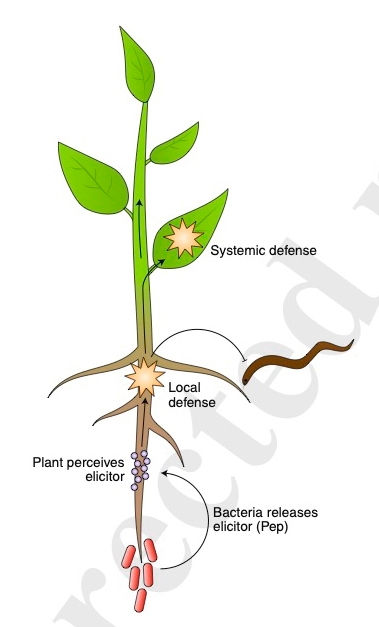
You're not thinking of root-knot nematodes, major pests of potatoes.
But potato growers and nematologists are.
So are the editors of the scientific journal, Nature Plants. Their current edition showcases research on root-knot nematodes by Washington State University (WSU) scientists Lei Zhang and Cynthia Gleason, and a commentary by UC Davis nematologist Shahid Siddique and colleague Clarissa Hiltl of the University of Bonn, Germany.
“Plant-parasitic nematodes are among the world's most destructive plant pathogens, causing estimated annual losses of $8 billion to U.S. growers and of nearly $78 billion worldwide," according to Siddique, an assistant professor in the UC Davis Department of Entomology and Nematology.
“Most current control methods rely on chemical nematicides, but their use is increasingly limited due to environmental concerns," Siddique and Hiltl wrote in their News and Views column, New Allies to Fight Worms.
They commented that the WSU scientists' proposed alternative pest management strategy--naturally occurring molecules or plant elicitor peptides (Peps)—shows promise: “Engineering a naturally occurring rhizobacterium to deliver Peps to the plant root system offers a new opportunity in integrated pest management.”
It's better to build up the host plant's immune system rather than directly target the pathogen with chemical nematicides which “are highly toxic and have negative effects on the ecosystem," Siddique told us.
The root-knot nematode Meloidogyne chitwoodi is a noted pest of potato production in the Pacific Northwest. Idaho leads the nation in commercial potato production, followed by Washington. Oregon ranks fourth. California, which ranks eighth, grows potatoes year around due to its unique geography and climate.
The WSU scientists demonstrated the effective use of Peps to combat root-knot nematodes in potato (Solanum tuberosum). They engineered a bacteria, Bacillus subtillis, to secrete the plant-defense elicitor peptide StPep1. They wrote that pre-treatment of potato roots “substantially reduced root galling, indicating that a bacterial secretion of a plant elicitor is an effective strategy for plant protection." (See article.)
“Besides chemical nematicides, methods of nematode management include the use of crop rotation, microbial biocontrol agents, cover crops, trap crops, soil solarization, fumigation and resistant plant varieties,” wrote Siddique and Hiltl. “However, several of these strategies are not effective or available for all crops. Nematicides are highly toxic, and their use is strictly limited due to environmental concerns. Resistant plants are often ineffective or unavailable. Microbial biocontrol agents have produced inconsistent results. In this context, the current work provides a new opportunity to manage plant-parasitic nematodes by combining two progressive strategies: the use of plant elicitors to enhance crop resistance to pathogens and the use of B. subtilis to deliver.”
According to the UC Statewide Integrated Pest Management Program (UC IPM), root-knot nematodes "usually cause distinctive swellings, called galls, on the roots of affected plants. Infestations of these nematodes are fairly easy to recognize; dig up a few plants with symptoms, wash or gently tap the soil from the roots, and examine the roots for galls. The nematodes feed and develop within the galls, which can grow as large as 1 inch in diameter on some plants but usually are much smaller."
"Nematodes are too small to see without a microscope," UC IPM points out. "Often you become aware of a nematode problem by finding galled roots on a previous crop. However, you also can use a simple bioassay to detect root knot nematodes in garden soil. Melons seeded in pots in moist soil collected from the garden will develop visible galls on the roots in about 3 weeks when pots are kept at about 80ºF if root knot nematodes are present. As a comparison, melons planted in heat-sterilized soil won't develop galls."
Stay tuned.
Attached Images:
